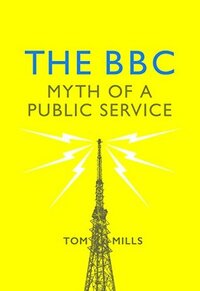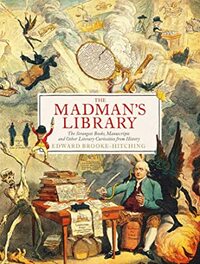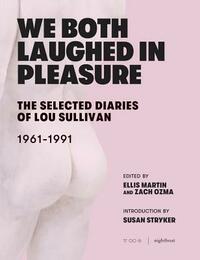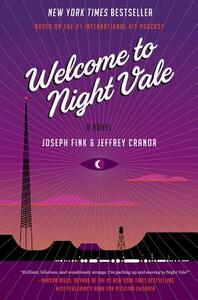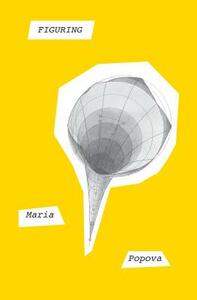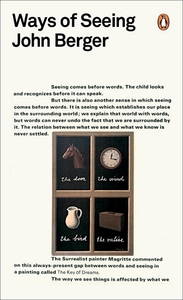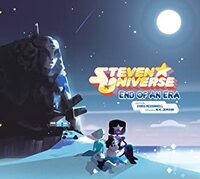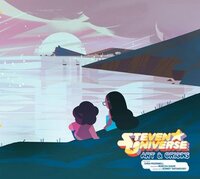Take a photo of a barcode or cover
mars2k's Reviews (234)
In the end, The BBC: Myth of a Public Service was paradoxically interesting yet also failing to hold my interest. I wouldn’t necessarily recommend this book, but I’m sure others will enjoy it more than I did.
Moderate: Racism, Police brutality
Minor: Addiction, Cursing, Homophobia, Sexual content, Slavery, Suicide, Violence, Xenophobia, Antisemitism
The Madman's Library: The Strangest Books, Manuscripts, and Other Literary Curiosities from History
Graphic: Animal death, Body horror, Death, Gore, Blood
Moderate: Ableism, Child death, Gun violence, Misogyny, Self harm, Sexual content, Forced institutionalization, Excrement, Cannibalism, Murder, Colonisation
Minor: Domestic abuse, Genocide, Homophobia, Incest, Infidelity, Racism, Slavery, Suicide, Torture, Violence, Vomit, Antisemitism, Pregnancy
We Both Laughed In Pleasure is an emotional rollercoaster from start to finish. Tragedy is punctuated with humour, and vice versa. There’s a lot of sex. A lot of death. And it has a great deal of value as a piece of queer history. An important read.
Graphic: Cursing, Deadnaming, Death, Drug use, Homophobia, Sexual content, Terminal illness, Toxic relationship, Transphobia, Medical content, Grief, Car accident, Death of parent
Moderate: Ableism, Adult/minor relationship, Alcoholism, Animal death, Incest, Misogyny, Rape, Sexual violence, Police brutality, Acephobia/Arophobia
Minor: Addiction, Cancer, Mental illness, Suicide, Violence, Blood, Vomit, Abortion, Murder, Lesbophobia
Graphic: Child death, Cursing, Death, Gun violence, Hate crime, Homophobia, Racial slurs, Racism, Rape, Sexual content, Sexual violence, Terminal illness, Transphobia, Violence, Blood, Police brutality, Islamophobia, Grief, Murder
Moderate: Ableism, Animal death, Cancer, Genocide, Suicide, Antisemitism
Minor: Domestic abuse, Panic attacks/disorders, Slavery, Vomit, Car accident, Death of parent
Graphic: Blood
Moderate: Body shaming, Bullying, Racism
Minor: Body horror, Cancer, Cursing, Death, Gore, Violence, Car accident
I would give Bitten by Witch Fever three and a half stars, but since I bought it for the pictures and not the text I feel it’s harsh to fault it for the writing.
Moderate: Animal death, Child death, Death, Gore, Murder
Minor: Cancer, Child abuse, Homophobia, Suicide, Vomit
- “Lives are lived in parallel and perpendicular, fathomed nonlinearly, figured not in the straight graphs of “biography” but in many-sided, many-splendored diagrams.”
- “The ecstasy of having personally chipped a small fragment of knowledge from the immense monolith of the unknown.”
- (on the topic of labels like “queer” and “Uranian”) “The human heart is an ancient beast that roars and purrs with the same passions, whatever labels we may give them. We are so anxious to classify and categorize, both nature and human nature. It is a beautiful impulse—to contain the infinite in the finite, to wrest order from the chaos, to construct a foothold so we may climb toward higher truth. It is also a limiting one, for in naming things we often come to mistake the names for the things themselves.”
Graphic: Child death, Chronic illness, Death, Misogyny, Racism, Sexism, Terminal illness
Moderate: Animal death, Sexual assault, Sexual content, Slavery, Violence
Minor: Ableism, Alcoholism, Genocide, Gore, Torture, Antisemitism, Religious bigotry, Abortion, Murder
I did really enjoy Ways of Seeing overall though, and I almost gave it a rating of four and a half stars but in the end I had to knock it down to a (high) four. The main let-down isn’t the writing, it’s that the images are grainy and greyscale – in my copy, at least – which makes them difficult to make sense of. This is especially frustrating in those “purely pictorial essays” where the images are supposed to speak for themselves without the need for accompanying text. How can I analyse an image if I can’t see what it is?
Moderate: Sexual content
Minor: Death, Sexism, Suicide
There’s so much more I want to gush about but I think I’ll wrap up this review here. I actually prefer End of an Era to Art & Origins, and I absolutely adored that book so that’s no mean feat! Likewise, this is a book I would recommend in a heartbeat :)
Moderate: Emotional abuse, Toxic relationship
Minor: Bullying, Homophobia, Misogyny, Grief
Steven Universe: Art & Origins is absolutely something I would recommend to fans of the show, and even to people who have no interest in Steven Universe whatsoever. It’s an inspiring read that I know I will revisit regularly.
Minor: Body horror, Bullying, Toxic relationship
